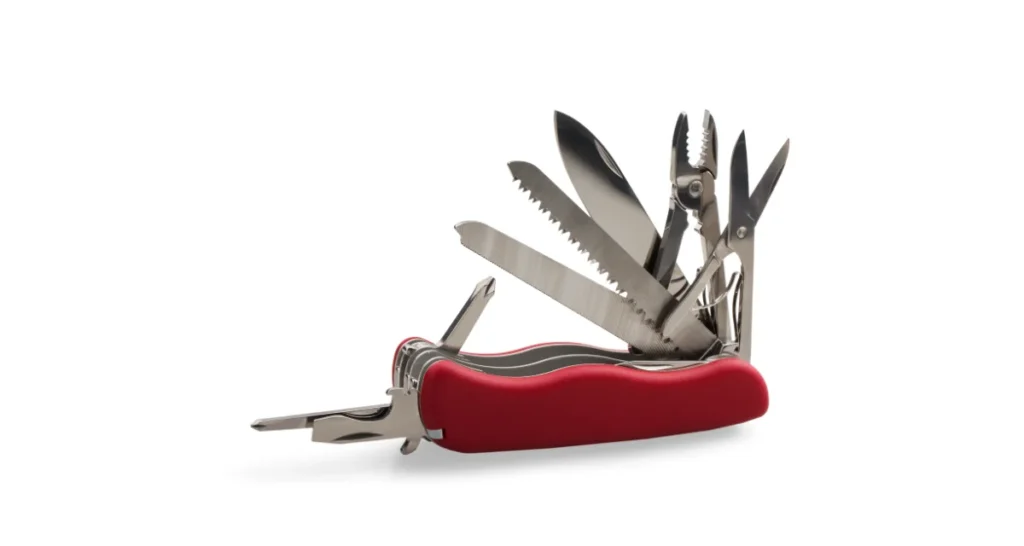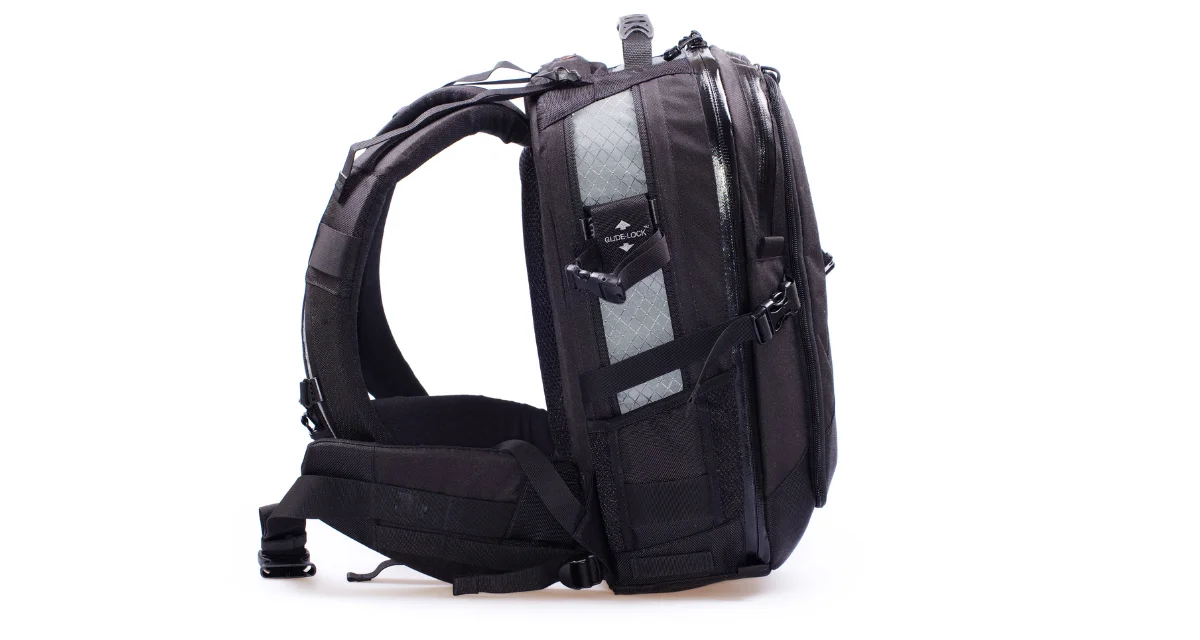Do you have a damaged shoulder strap on your backpack and don’t know how to repair it? Then you’ve come to the correct spot since this post will show you how to fix a damaged backpack strap!
For everyone from tourists to explorers, backpacks are necessary for travel companions. You may encounter this situation anytime, such as while on an Appalachian Mountain hike with friends and family.
But don’t worry; we’ll provide you with in-depth advice on how to make your backpack usable once more. We can fix any problem, be it a frayed strap, a broken buckle, or a detached attachment.
It’s simpler than you might imagine to fix a backpack strap. You may increase the lifespan of your favorite backpack with some basic tools and some advice.
Repair a backpack strap with sewing

Required tool
Collect the necessary equipment and supplies before beginning the repair. This guarantees a seamless process and prevents any delays once the real repair work is underway. What you’ll need is as follows:
- Scissor: For trimming frayed edges and excess threads.
- Needle & Thread: Pick a thread that is sturdy and long-lasting and matches the color of your bag strap.
- Nylon fabric (about 2 x 5 inches)
- Nylon upholstery thread (Recommended for use)
Fixing backpack strap
How to Repair a backpack strap without sewing
As we explained, attaching the backpack strap may be done without much difficulty if you have the right tools. Having these supplies on hand will make it simple for you to quickly repair the backpack strap.
There are a few things to keep in mind when fixing a bag strap. Numerous things are frequently attached to shoulders via buckles, drawstrings, and customizing possibilities. These parts run the risk of coming loose when a backpack strap is removed and getting lost.
Repair a Backpack Strap using duct tape

You can just use some duct tape to hold the entire thing together if there is only a little break and the backpack strap is still attached to the rest of the bag.
Start by taking everything out of your backpack and, if you’ve kept a list, arrange it neatly. By doing this, you may be sure that the tapes won’t stick to any of your equipment. Remember that certain tapes leave a residue that is subsequently challenging to remove.
Wrap the torn portions of the backpack strap in duct tape as flat as you can.
It’s vital to remember that this fix only functions if the tear is not located towards the strap’s bottom. Keep in mind that if you use too much duct tape, you won’t be able to modify the strap as much.
Repair a Backpack Strap using superglue
Although super glue can come in handy occasionally, it’s not the best choice for repairing anything on your backpack. Although it’s a decent temporary fix, superglue doesn’t work well with fabric or even plastic, so you will eventually need to fix the backpack correctly, ideally before the superglue fails.
If any of the backpack’s plastic components come undone, you can use superglue to repair them, reattach the zipper pullers, or even sew fabric fragments back together.
Repair a Backpack Strap using zip ties

Zip ties come quite useful for a variety of things, like rapidly mending a damaged backpack strap. Since they can help you keep the strap in place, they’re especially great for replacing the strap adjusters quickly.
For a short-term fix that won’t last forever, you can also use a zip tie to hold a broken shoulder strap together.
It is best to stitch the strap together or replace it totally as soon as possible because using a zip tie to keep a strap together for an extended period of time might actually do more harm in the long term.
Read: Guide to Different Types of Backpacks –What is the best option for you?
Preventative Tips to Maintain Backpack Straps
To ensure the longevity of your backpack straps, consider these preventative measures:
Regular Inspections: Periodically inspect your backpack straps for any signs of wear and tear.
Proper Weight Distribution: Avoid overloading your backpack, as this can strain the straps.
Gentle Handling: Treat your backpack with care, avoiding unnecessary tugging and pulling.
Storage: Store your backpack in a dry and cool place to prevent material degradation.
Carry a repair kit for backpacks
Carrying a repair kit when hiking will keep you ready for unexpected situations and save you money if your gear breaks.
Although you can’t purchase a backpack repair kit online, you can create one yourself and throw it in your bag so you can mend it while you’re out and about if a strap breaks once more.
Sewing Kit
As we already mentioned, duct tape and staples are not a long-term fix; nevertheless, for best results, you should utilize the backstitch method to repair the backpack strap.
A thimble, sewing needles, buttons (you never know when they’ll come in handy! ), a set of strong threads, and straight pins should all be included in a sewing kit if you want to stitch anything at all. Thimbles are especially important for people with clumsy fingers.
Scissors/ Multitool

In any backpack repair kit, scissors or multi-tools with scissors are a necessity. Use these to neatly trim away any extra fabric and threads, or simply divide the strap in half so you can mend it correctly before sewing it back together.
Several types of scissors are lightweight, foldable, and small. Even the scissors can be kept in the sewing kit.
Small scissors might not be able to perform the job, and you might have to rely on a knife or even hard-wire cutters, so a multi-tool is a better option than scissors because you’ll have a variety of equipment to use for cutting.
Pocket torch
The greatest item to include in your bag is a pocket torch or a small emergency light. These are available in a wide range of designs, including battery-, solar-, and even dynamo-powered models.
Extra Buckels
The usual plastic buckles found on many backpacks are prone to snapping or being damaged when carrying a big load. Therefore, it is best practice to keep a few extra buckles in your kit in case one breaks, saving you from having to continue your journey.
Duct Type
What can be said about this sturdy, adaptable tape that is easily accessible and can repair tents, backpacks, and other harder materials? These tapes have a strong stickiness and are made of tent material.
Heavy objects can be bundled, joined, and sealed, and they bond well on rough surfaces, shut out moisture, and are resistant to abrasion and wear.
Conclusion
It might seem difficult to fix a backpack strap, but with the correct equipment and some perseverance, you can do it. Don’t forget to accurately assess the damage & select the best repair strategy. Whether you’re an experienced DIY enthusiast or a newbie, these steps will help you get your trusty backpack back in shape.


4 thoughts on “How to Repair a Backpack Strap: A Step-by-Step Guide”